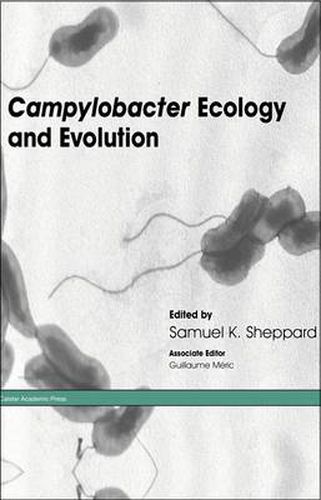Readings Newsletter
Become a Readings Member to make your shopping experience even easier.
Sign in or sign up for free!
You’re not far away from qualifying for FREE standard shipping within Australia
You’ve qualified for FREE standard shipping within Australia
The cart is loading…






Members of the genus Campylobacter are commonly found in the gastrointestinal tract of mammals and birds, and can be commensal or pathogenic in nature. For example, Campylobacter jejuni can be a harmless commensal organism in poultry and other avian and animal hosts, but in humans, it is pathogenic and the most common cause of bacterial gastroenteritis worldwide. In recent years, the application of DNA sequencing and ‘omics’ technologies to large numbers of isolates has allowed Campylobacter research to advance rapidly, revealing fascinating new insights into the cellular biology and evolution of this highly variable group of bacteria. In this book, internationally recognized experts critically review and provide novel insights into important aspects Campylobacter research. The book is divided into four sections: mechanisms of evolution, adaptations to host colonization, molecular epidemiology, and ecology in poultry. The topics covered range from the mechanisms of evolution through the processes of host colonization and within host adaptation, as well as epidemiology to considerations of their broader biochemical and ecological properties.
$9.00 standard shipping within Australia
FREE standard shipping within Australia for orders over $100.00
Express & International shipping calculated at checkout
Members of the genus Campylobacter are commonly found in the gastrointestinal tract of mammals and birds, and can be commensal or pathogenic in nature. For example, Campylobacter jejuni can be a harmless commensal organism in poultry and other avian and animal hosts, but in humans, it is pathogenic and the most common cause of bacterial gastroenteritis worldwide. In recent years, the application of DNA sequencing and ‘omics’ technologies to large numbers of isolates has allowed Campylobacter research to advance rapidly, revealing fascinating new insights into the cellular biology and evolution of this highly variable group of bacteria. In this book, internationally recognized experts critically review and provide novel insights into important aspects Campylobacter research. The book is divided into four sections: mechanisms of evolution, adaptations to host colonization, molecular epidemiology, and ecology in poultry. The topics covered range from the mechanisms of evolution through the processes of host colonization and within host adaptation, as well as epidemiology to considerations of their broader biochemical and ecological properties.